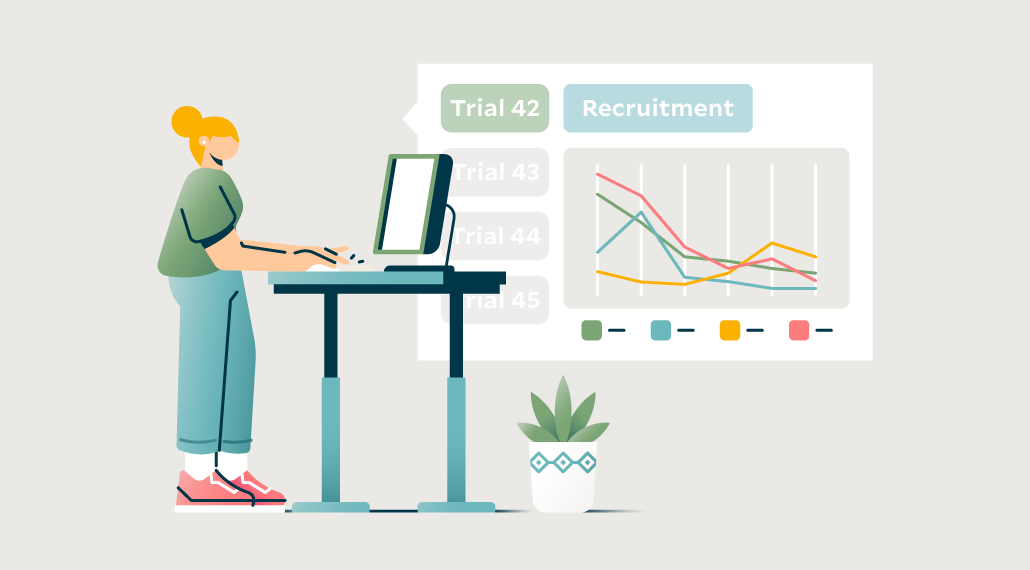December 19th, 2022
How Sponsors Can Use Clinical Trial Performance Metrics When Collaborating with Sites
By OneStudyTeam

Clinical research performance metrics are most often leveraged for site feasibility assessments, but their utility extends far beyond those analyses. While site performance data is valuable to inform site selection by sponsors, it can also provide valuable information to guide study setup, highlight the need for additional site support, facilitate better trial design, inform recruitment strategy updates, and more. Comprehensive and intentional data collection strategies throughout clinical trial enrollment are essential to making the most of these metrics.
Here are top site performance metrics for sponsors to track during clinical trials:
Site infrastructure and capabilities
A site’s track record of experience, practice type (i.e. a small clinic vs. large academic medical center), and staffing are all factors typically considered in site feasibility assessments. While these factors are important in determining how qualified a site is for a study, you can also consider ways to support a less-experienced but viable site. For example, you can provide necessary training, equipment, and pre-screening requirements to help set sites up for success.
Site recruitment potential
Evaluate the reachable patient population at a site. This is another factor commonly assessed in site selection, but this can also be revisited throughout the study if enrollment challenges arise. One possible issue is that a site may have a large reachable population of interest but an inconvenient location on the far side of a metro area. With travel as a perceived patient burden, recruitment could be delayed.
StudyTeam reporting insights from past trials can provide this context before launching a new trial and setting enrollment goals. For example, you can investigate the reasons patients have declined to participate in your trials, such as “too burdensome.” This can be indicative of factors such as excessive travel time, which you can consider proactively addressing for future trials.
Recruitment and enrollment efficiency
No matter the size of a site’s eligible patient population, the study will be held back if these candidates aren’t being reached and enrolled in a timely manner. Throughout a trial, you should be aware of how many potential candidates are being contacted, pre-screened, screened, and enrolled, as well as how long this process takes on both an individual and study-wide scale.
This information can be automatically aggregated in StudyTeam for Sponsors when sites input pre-screening and recruitment data into StudyTeam for Sites. With the Recruitment Progress report, you can see how patients are progressing through each recruitment and enrollment stage, including where they are failing out – during pre-screening or screening? You can get granular by filtering the report by site to identify which sites may need more support or engagement.

Participant retention rates
Even if a site has excellent recruitment and enrollment rates, retention is what ultimately ensures the collection of trial data that informs therapeutic innovation. Many issues can impact whether participants stay with a trial from start to finish. It is important for sponsors to evaluate how many enrolled participants complete trials at a site and what reasons are given for withdrawal. This can offer insights into opportunities for improvement, such as increased scheduling flexibility for participants.
Safety and data quality
For sites that you have worked with previously, assessing the site’s record of data queries, protocol deviations, and adverse events can be valuable in understanding where time, money, and data integrity could be compromised during future trials. However, you can consider how adverse events and protocol deviations may vary by therapeutic area and result from factors outside of a site’s control.
How sponsors can make the best use of performance metrics to guide interventions
Maximize data collection to understand site strengths and limitations
For the clearest picture of a site’s past performance and potential, collect as many key metrics for clinical trials as possible to determine next steps. As a single centralized platform, StudyTeam for Sites makes it simple for sites to collect and share a number of these detailed metrics while recruitment and enrollment are ongoing.
Track performance data throughout the enrollment process
Valuable data can be collected and monitored throughout enrollment with StudyTeam. Using this platform, you gain real-time visibility into pre-screening and screening failure reasons, enrollment rates, enrollment patterns across sites, and more.
When you are aware of recruitment and enrollment inefficiencies early in a trial, you can intervene to save time and money rather than wait for the study to exceed budget or timeline constraints.
Related Posts

How Does a Trial Manager in Greece Improve Clinical Trial Operations with StudyTeam®?
Dimitris Tziogas, local trial manager at a biotechnology company in ...
Read More
How to Address Key Clinical Trial Challenges, According to Clinresco Centres in South Africa
There’s no single solution to overcoming a research site’s specific ...
Read More
3 Clinical Trial Billing Challenges Research Sites Solve with StudyTeam
Challenge 1: Complicated coverage analysis Challenge 2: Tedious budgeting ...
Read More

.png?width=64&name=OST%20Transparent%20(1).png)